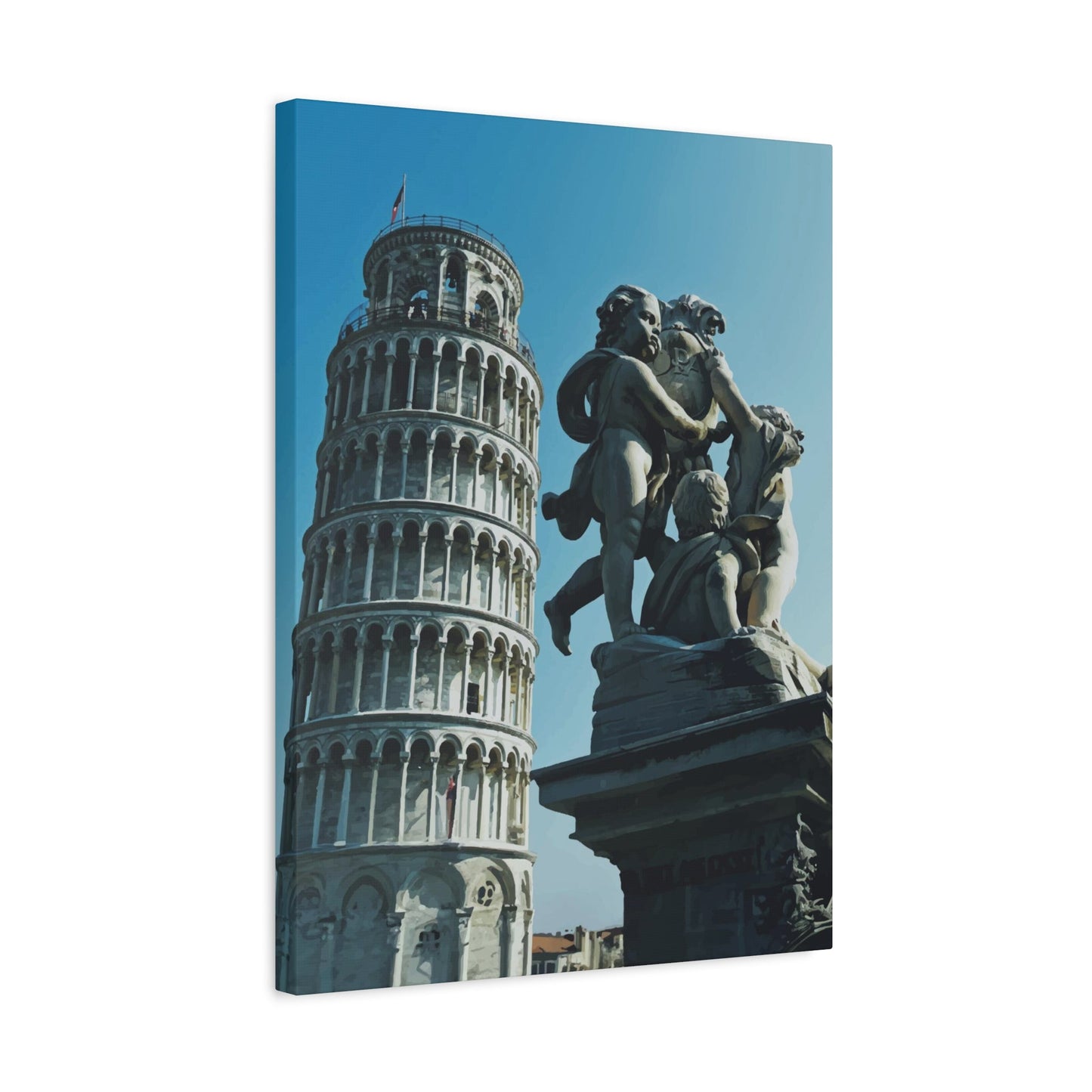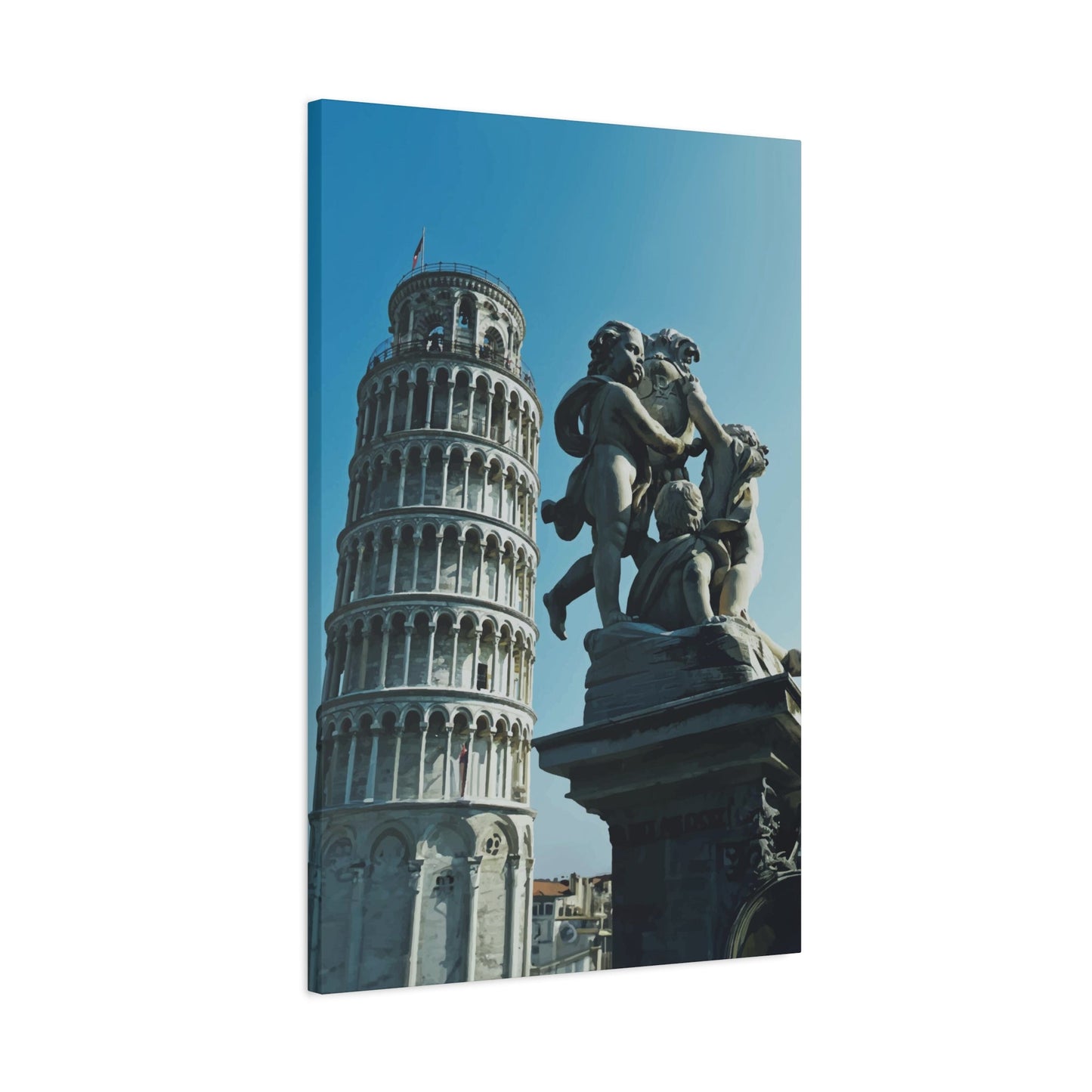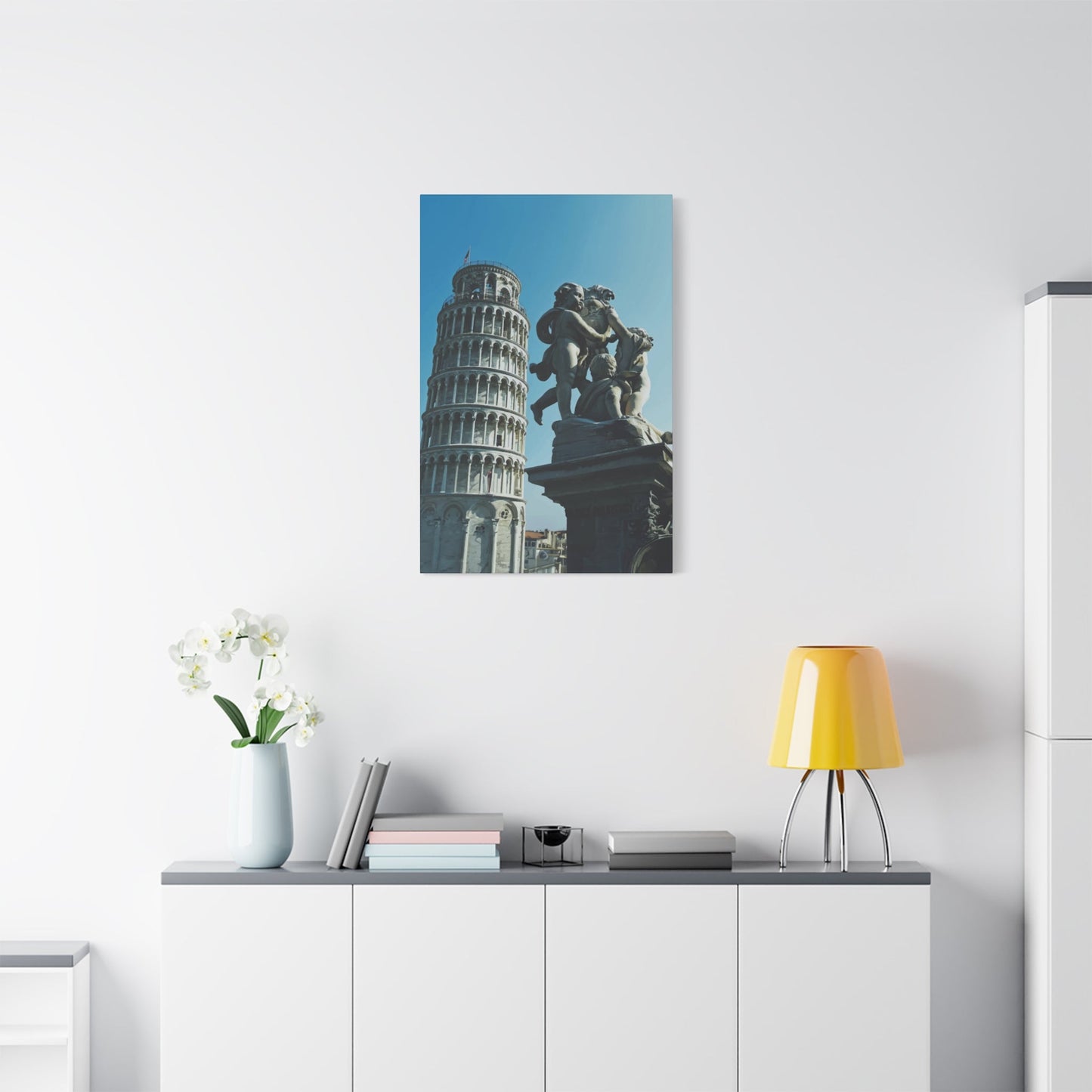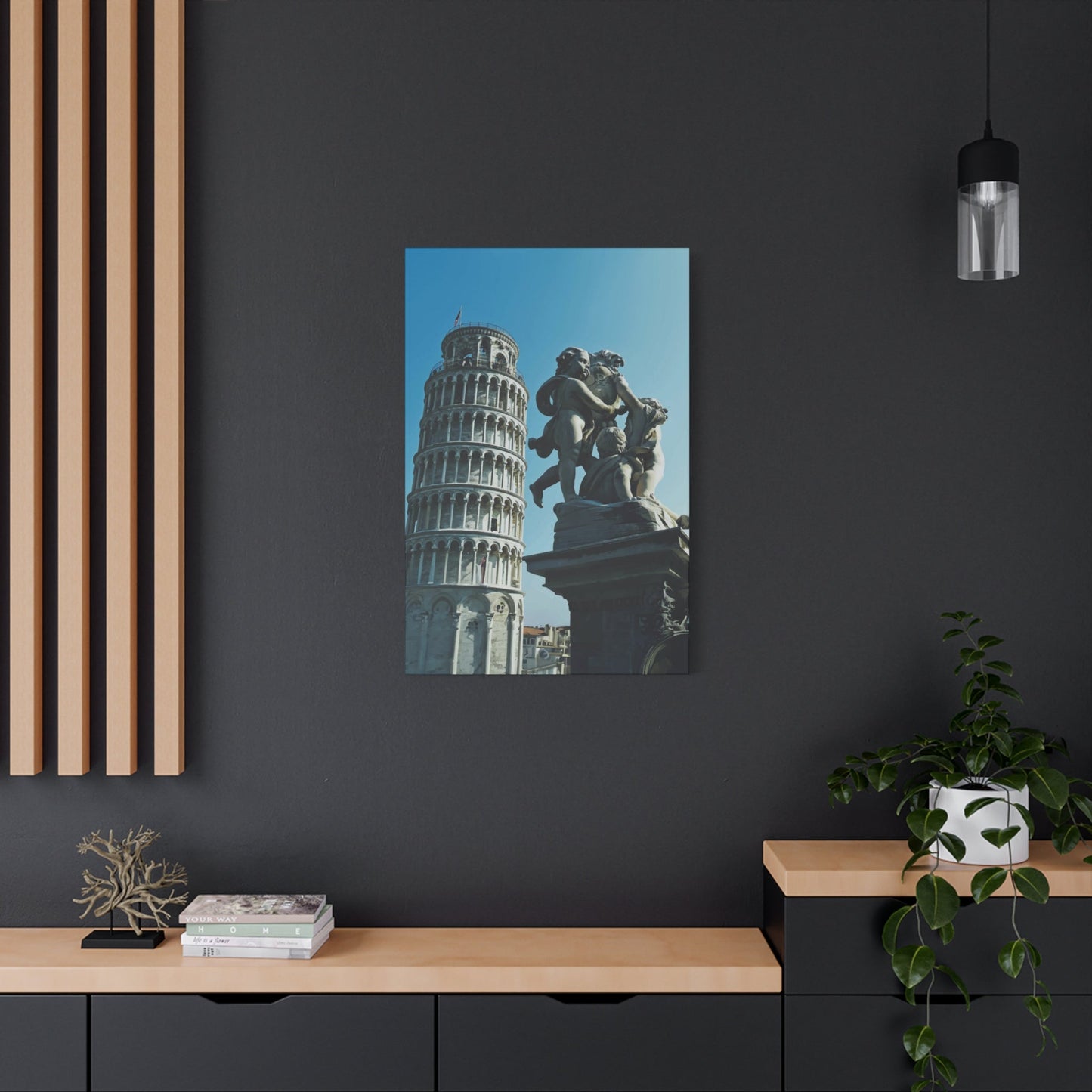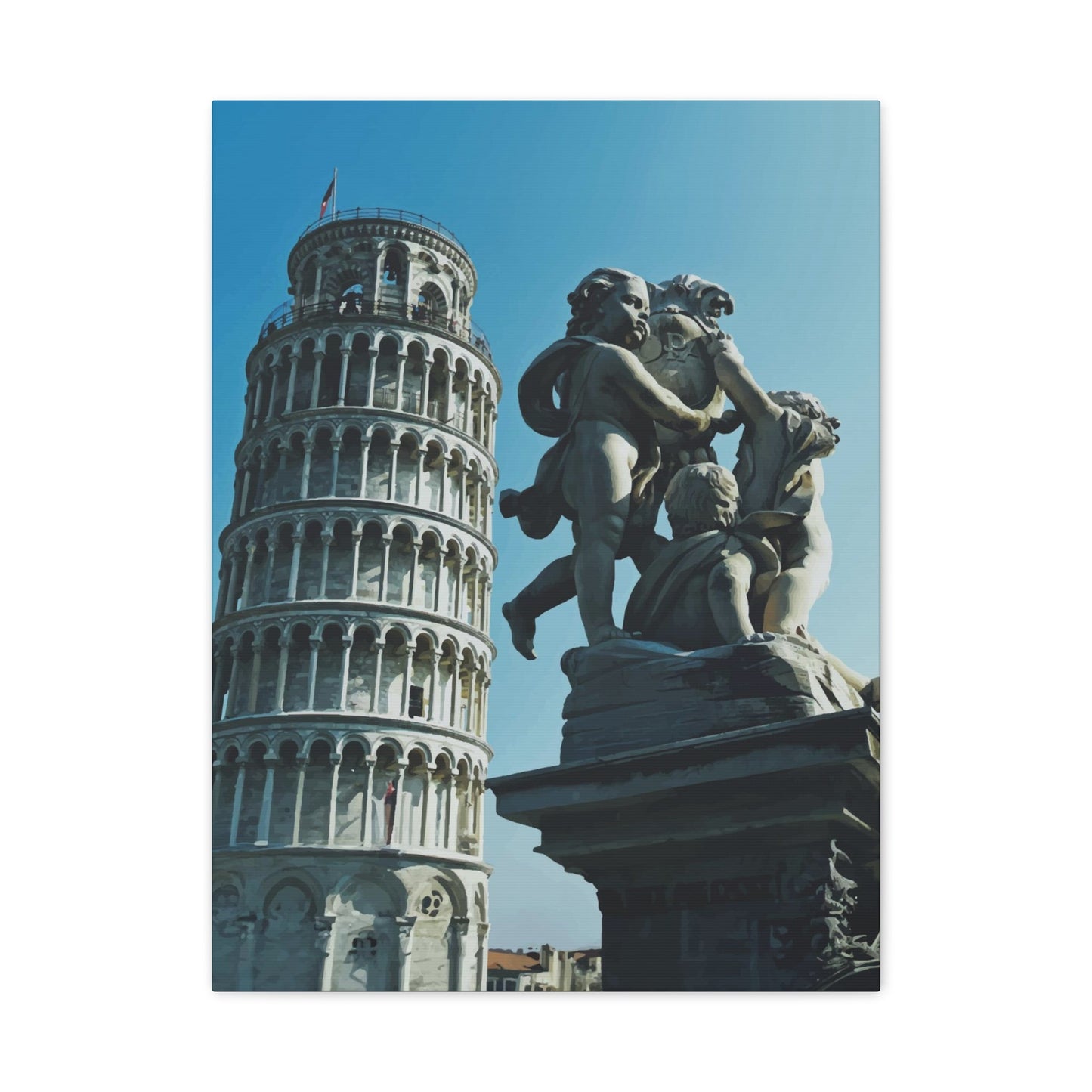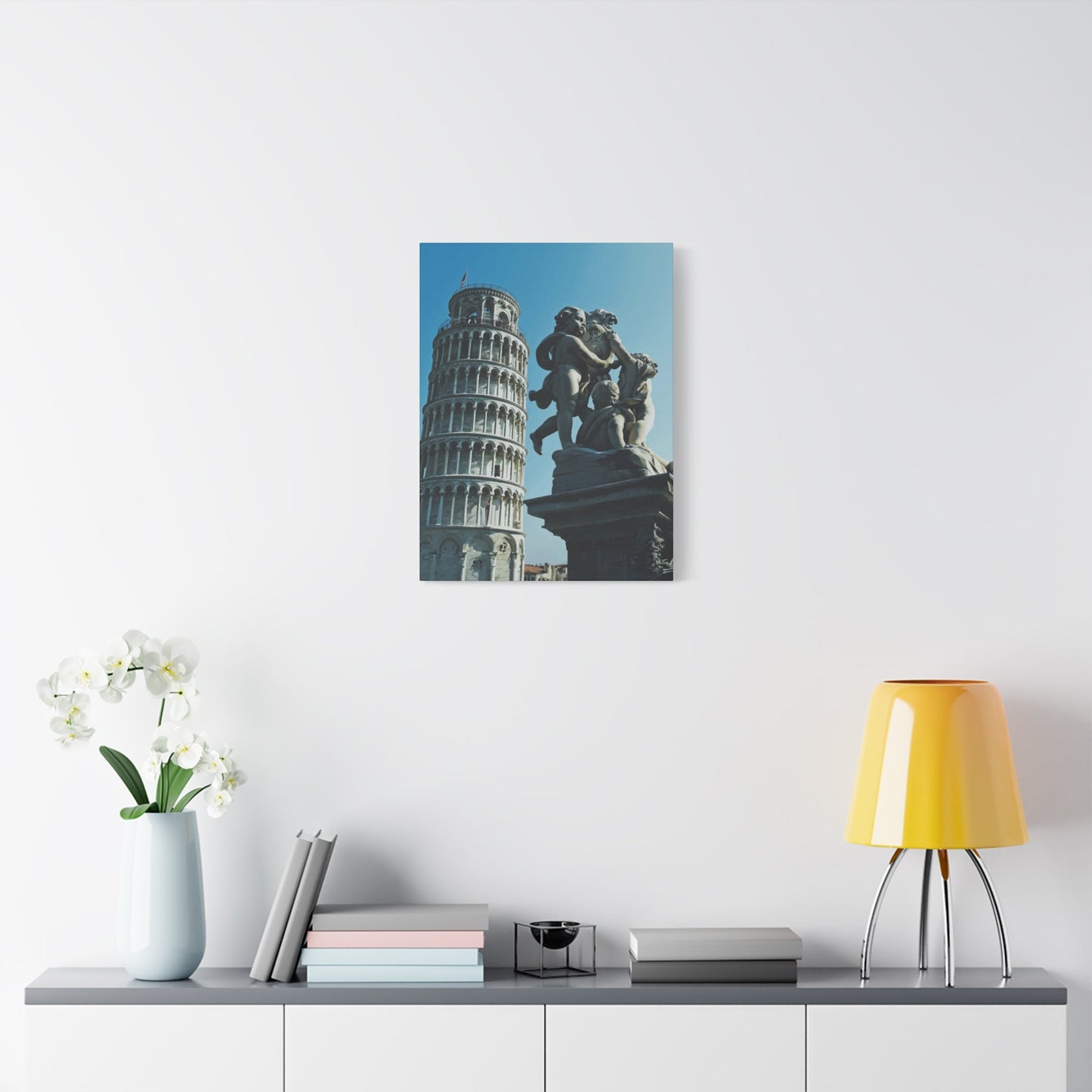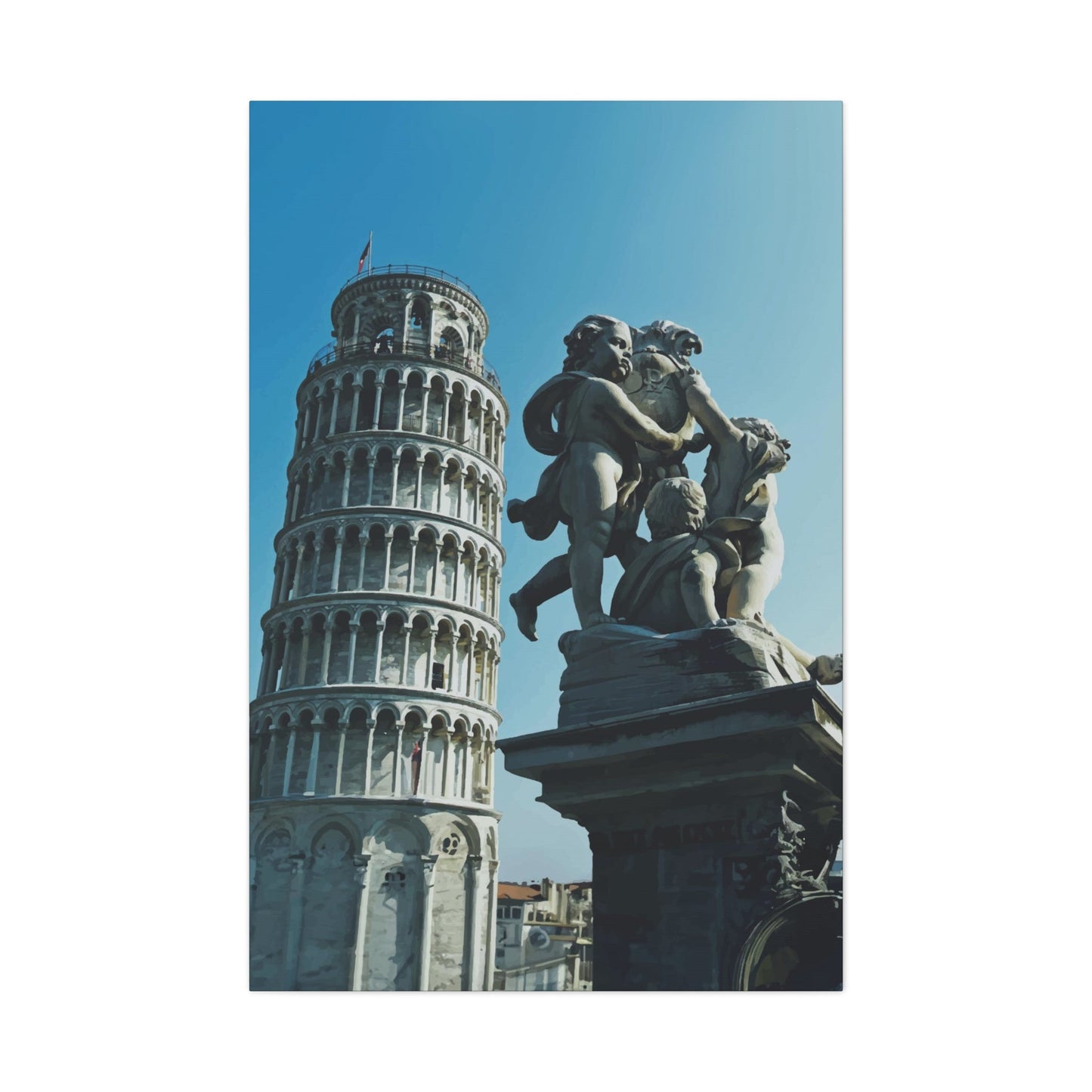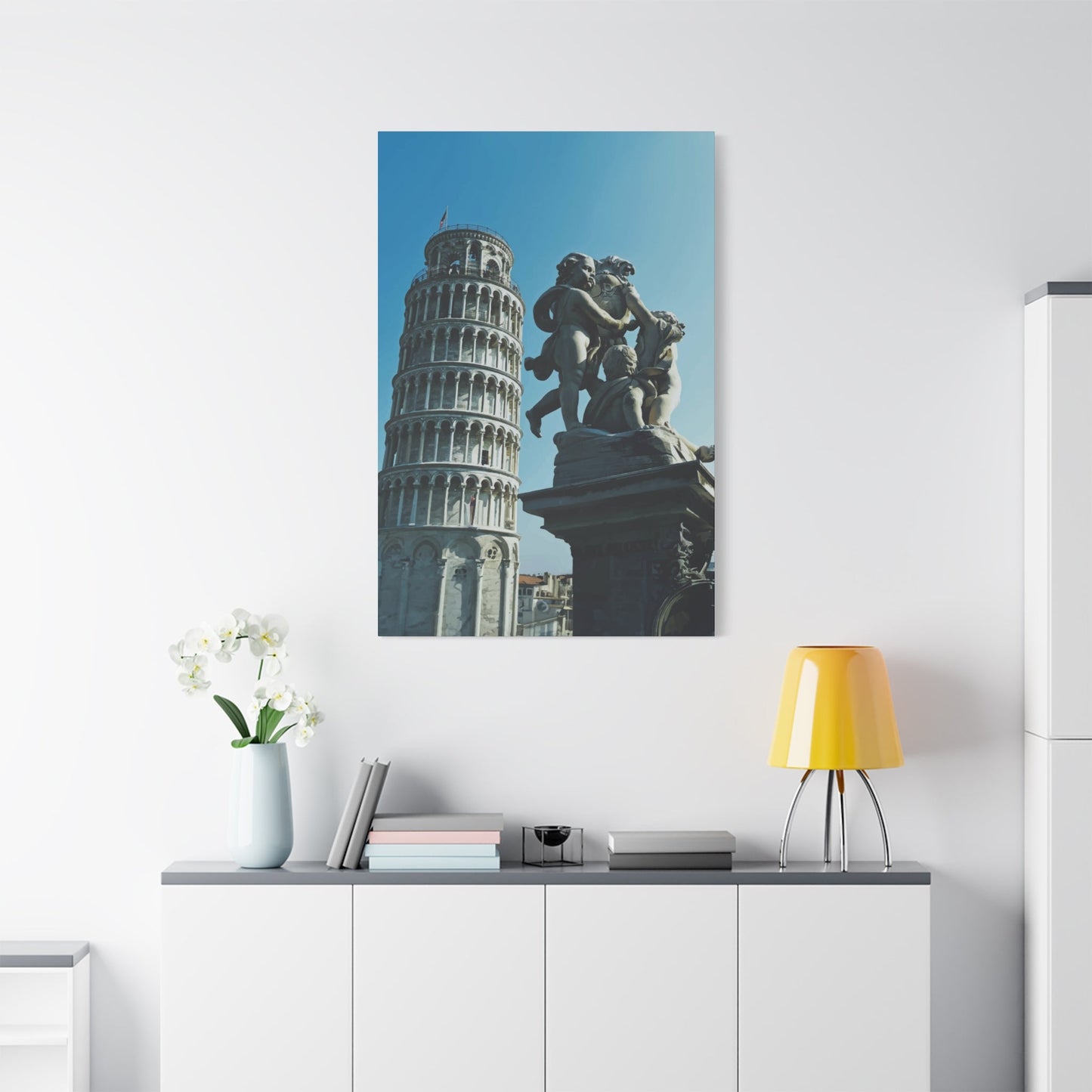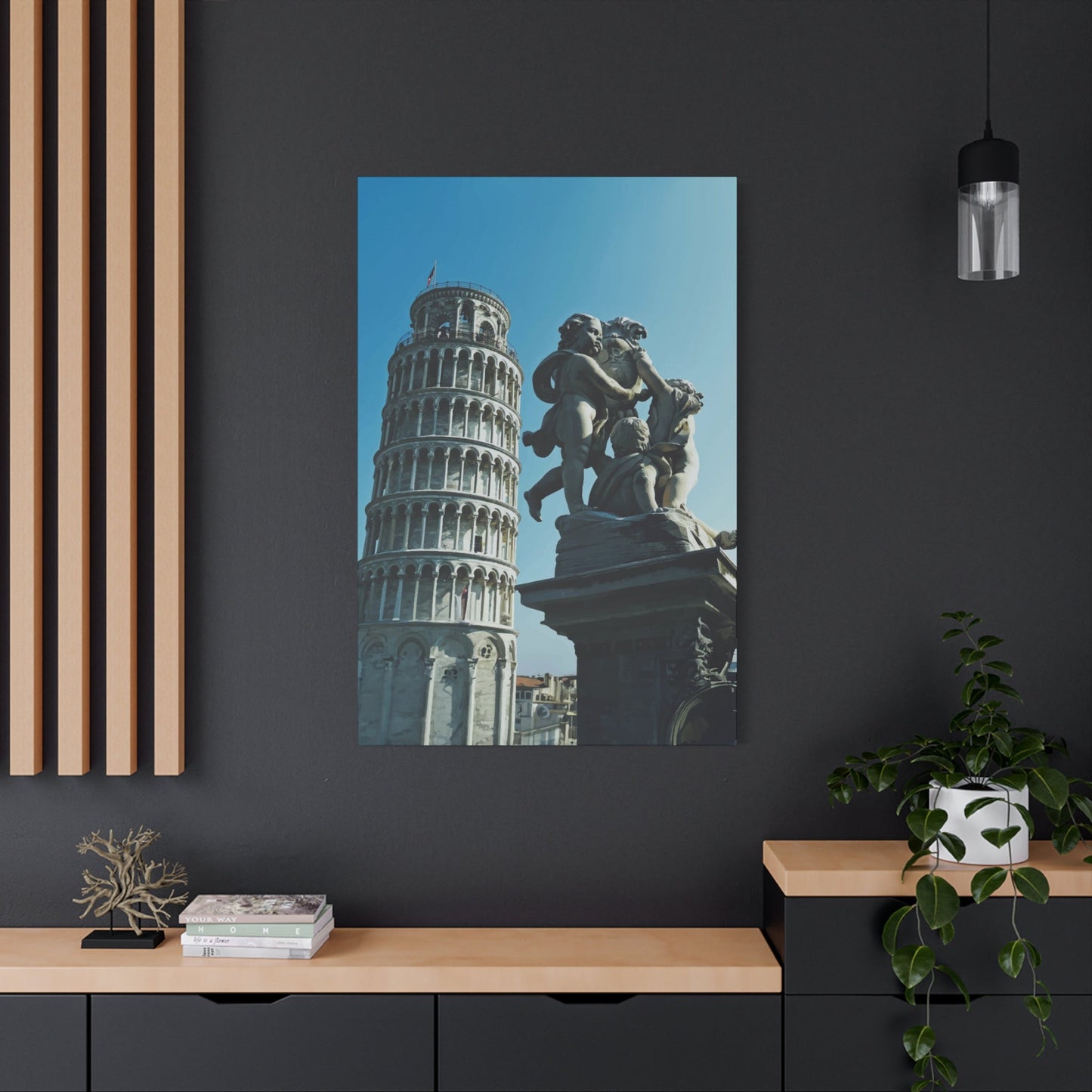Leaning Tower of Pisa Wall Art: Iconic Elegance for Your Space
The magnificent Leaning Tower of Pisa has captured hearts and imaginations for centuries, making it one of the most beloved architectural wonders in the world. Today, this iconic Italian landmark continues to inspire artists and decorators alike, transforming ordinary walls into extraordinary visual experiences through stunning Pisa wall art collections. Whether you're drawn to the tower's distinctive lean, the surrounding architectural beauty, or the romantic Italian atmosphere, incorporating these artistic pieces into your living environment creates an instant connection to one of Europe's most celebrated destinations.
From classic black and white photography to vibrant contemporary interpretations, Pisa wall art offers endless possibilities for enhancing your home or office aesthetic. These carefully crafted pieces serve as more than mere decoration; they represent a bridge between your personal sanctuary and the timeless beauty of Italian architecture. The appeal of Pisa-themed artwork extends far beyond its visual impact, offering viewers a daily reminder of travel dreams, architectural appreciation, and the enduring human spirit that created such remarkable structures.
The versatility of Pisa wall art makes it suitable for virtually any setting, from modern apartments to traditional homes, corporate offices to cozy cafes. Each piece tells a story, whether it's capturing the golden hour light cascading across ancient stones or presenting a minimalist interpretation that focuses on geometric beauty. This diverse range ensures that every art enthusiast can find the perfect representation that resonates with their personal style and enhances their chosen environment.
Black and White Pisa Wall Art
Monochromatic Pisa wall art represents the pinnacle of timeless elegance, stripping away distracting colors to focus entirely on the architectural magnificence and dramatic contrasts that make this landmark so compelling. These sophisticated pieces emphasize the tower's distinctive lean, the intricate stonework details, and the interplay of light and shadow that creates such dramatic visual impact. The absence of color allows viewers to appreciate the pure geometric forms, the weathered textures of centuries-old marble, and the striking silhouette that has become synonymous with Italian architectural achievement.
Professional photographers and artists who create black and white Pisa wall art often employ sophisticated techniques to enhance the dramatic qualities inherent in this remarkable structure. High contrast printing methods bring out the finest details in the tower's surface, from individual stone blocks to decorative elements that might otherwise go unnoticed. The monochromatic palette also allows for exceptional versatility in home decoration, seamlessly integrating with existing color schemes while maintaining its powerful visual presence.
The psychological impact of black and white Pisa wall art cannot be understated. These pieces evoke feelings of sophistication, history, and artistic appreciation while maintaining a contemporary edge that appeals to modern sensibilities. The stark contrasts often present in these works create focal points that draw the eye and encourage contemplation, making them ideal conversation starters and sources of daily inspiration.
Gallery-quality black and white Pisa prints often showcase the tower from unique perspectives, capturing angles that reveal new aspects of its architectural character. Some focus on the tower's relationship with surrounding buildings, creating compositions that tell broader stories about Italian urban development and historical preservation. Others zoom in on specific details, transforming architectural elements into abstract art that celebrates both form and craftsmanship.
The technical excellence required to produce outstanding black and white Pisa wall art demands expertise in both photography and printing processes. Master photographers understand how different lighting conditions affect the tower's appearance, often returning multiple times to capture the perfect moment when shadows and highlights create the most compelling compositions. The printing process itself requires careful attention to paper selection, ink quality, and color calibration to ensure that every subtle gradation is perfectly reproduced.
Contemporary black and white Pisa wall art also explores artistic interpretations beyond traditional photography. Graphic artists create stylized versions that emphasize geometric patterns, while illustrators develop pen and ink drawings that capture the tower's essence through careful line work and shading techniques. These varied approaches ensure that black and white Pisa wall art remains fresh and relevant, offering new perspectives on this ancient landmark.
The versatility of monochromatic Pisa artwork extends to framing and presentation options. Simple black frames enhance the dramatic contrast, while white frames create a softer, more integrated appearance. Metal frames add contemporary sophistication, and wooden frames introduce warmth that complements the historical nature of the subject matter. Each presentation choice affects the overall impact, allowing collectors to customize their pieces to match their specific aesthetic preferences.
Colorful Pisa Canvas Designs
Vibrant, colorful Pisa canvas designs breathe new life into this historic landmark, transforming the familiar tower into dynamic artistic expressions that celebrate both architectural heritage and contemporary creativity. These pieces often incorporate brilliant blues representing the Tuscan sky, warm golden tones reflecting the Mediterranean sun, and rich earth colors that echo the surrounding Italian countryside. The addition of color allows artists to convey not just the physical appearance of the tower, but also the emotional experience of visiting this remarkable destination.
Modern digital art techniques enable creators to produce colorful Pisa canvas designs that push creative boundaries while maintaining respect for the original structure's integrity. Some artists employ watercolor-inspired techniques that create dreamy, impressionistic interpretations, while others use bold, graphic approaches that transform the tower into pop art statements. These diverse stylistic choices ensure that colorful Pisa wall art appeals to a broad range of aesthetic preferences and decorating styles.
The psychological impact of colorful Pisa canvas designs differs significantly from their monochromatic counterparts, often evoking feelings of joy, wanderlust, and optimism. Bright, cheerful colors can energize a room and create positive associations with travel, adventure, and cultural appreciation. These pieces work particularly well in social areas where their uplifting presence can enhance conversations and create welcoming atmospheres for guests and family members alike.
Seasonal interpretations represent one of the most popular categories within colorful Pisa canvas designs. Artists capture the tower during different times of year, from spring scenes featuring blooming flowers in the foreground to autumn compositions that incorporate the warm colors of changing leaves. Summer versions often emphasize the intense blue of clear Italian skies, while winter interpretations might include subtle gray tones that suggest cooler weather while maintaining the overall colorful approach.
Sunset and sunrise compositions form another major category within colorful Pisa wall art collections. These pieces capture the magical moments when natural light transforms the tower's appearance, creating dramatic color palettes that range from soft pastels to intense oranges, reds, and purples. The interplay between artificial and natural lighting during these times creates complex color relationships that skilled artists translate into compelling canvas designs.
Contemporary colorful Pisa canvas designs also incorporate abstract elements that move beyond literal representation toward artistic interpretation. Some pieces feature geometric overlays, textural elements, or stylized backgrounds that complement rather than compete with the tower's distinctive form. These approaches allow artists to create unique works that celebrate the landmark while expressing their individual creative vision.
The printing technology used for colorful Pisa canvas designs has advanced significantly, allowing for exceptional color accuracy and longevity. High-quality pigment inks resist fading and maintain their vibrancy for decades when properly cared for. Canvas materials themselves have evolved to provide better color reception and durability, ensuring that these artistic investments continue to provide visual pleasure for years to come.
Colorful Pisa wall art also lends itself well to series presentations, where multiple related pieces create comprehensive visual narratives. Some collections follow the tower through different lighting conditions throughout a single day, while others explore seasonal changes or various artistic interpretations of the same subject. These series approaches allow collectors to create sophisticated gallery walls that tell complete stories while maintaining visual coherence.
Vintage Travel Posters Pisa Edition
Vintage travel posters featuring Pisa represent a fascinating intersection of advertising history, artistic design, and travel culture, capturing the golden age of tourism when elegant graphics and compelling copywriting combined to inspire wanderlust and adventure. These carefully crafted pieces reflect the design sensibilities of specific eras, from Art Deco influences of the 1920s and 1930s to the bold, colorful approaches popular in the 1950s and 1960s. Each poster tells dual stories: the timeless appeal of the Leaning Tower and the evolving approaches to visual communication and tourism promotion.
Original vintage travel posters featuring Pisa have become highly sought-after collectibles, with authentic pieces from major tourism boards and transportation companies commanding significant prices among serious collectors. However, contemporary reproductions and inspired designs make this aesthetic accessible to broader audiences, allowing anyone to enjoy the distinctive visual appeal of vintage poster design in their home or office environment. These modern interpretations often maintain the classic design principles while updating colors and printing techniques for contemporary preferences.
The typography used in vintage travel posters Pisa edition deserves special attention, as it reflects the design trends and communication styles of specific historical periods. Bold, sans-serif fonts popular in mid-century design create strong visual hierarchies, while more ornate lettering styles echo earlier periods when craftsmanship and decoration were highly valued. The integration of text and imagery in these posters demonstrates sophisticated understanding of visual communication principles that remain relevant in contemporary design.
Color palettes in vintage travel posters featuring Pisa often reflect both the available printing technologies of their era and the desired emotional responses from viewers. Early posters might feature more limited color ranges due to printing constraints, while later examples showcase broader spectrums that take advantage of advancing reproduction techniques. The psychological impact of these color choices continues to influence contemporary design, with many modern artists drawing inspiration from vintage palettes when creating new Pisa wall art.
The composition techniques employed in vintage travel posters demonstrate sophisticated understanding of visual hierarchy and viewer psychology. Strategic placement of the Leaning Tower within the overall design creates focal points that draw attention while supporting text and additional graphic elements guide the viewer's eye through the complete message. These composition principles translate effectively to contemporary home decoration, where the posters function as both artistic statements and conversation pieces.
Cultural context plays a crucial role in understanding vintage travel posters featuring Pisa. These pieces reflect specific historical periods when international travel was becoming more accessible to middle-class audiences, and tourism promotion had evolved into a sophisticated art form. The optimistic, adventurous spirit conveyed in these posters captures a particular moment in cultural history when travel represented freedom, sophistication, and personal enrichment.
Contemporary artists creating vintage-inspired Pisa travel posters often research authentic historical examples to understand the design principles, color choices, and compositional approaches that made original pieces so effective. This research-based approach ensures that new works maintain the authentic spirit of vintage design while incorporating modern techniques and materials that enhance durability and visual impact.
The versatility of vintage travel poster aesthetics makes these pieces suitable for various decorating schemes, from retro-themed environments that celebrate mid-century design to eclectic approaches that mix historical and contemporary elements. The nostalgic appeal of vintage poster design creates emotional connections that enhance the overall impact of Pisa wall art, transforming functional decoration into meaningful personal expression.
Famous Landmarks for Home Decor
Incorporating famous landmarks like the Leaning Tower of Pisa into home decor represents a sophisticated approach to personal expression that combines cultural appreciation, aesthetic enhancement, and storytelling through visual elements. The psychological benefits of surrounding ourselves with images of renowned architectural achievements extend beyond mere decoration, creating daily connections to human creativity, historical significance, and the broader world beyond our immediate environment. These pieces serve as constant reminders of travel aspirations, cultural interests, and appreciation for human achievement.
The Leaning Tower of Pisa holds particular appeal as a landmark for home decor because it represents multiple layers of meaning and association. Its distinctive lean makes it instantly recognizable, while its architectural significance connects viewers to centuries of Italian craftsmanship and engineering innovation. The tower's romantic associations with Italian culture, travel experiences, and European sophistication make it an ideal choice for creating atmospheric environments that suggest worldliness and cultural appreciation.
When selecting famous landmark artwork for home decor, consideration of scale, placement, and surrounding elements becomes crucial for achieving desired aesthetic effects. Large-scale Pisa wall art can serve as dramatic focal points in spacious areas, while smaller pieces work effectively as part of gallery wall arrangements or accent pieces in intimate settings. The key lies in understanding how the landmark's visual weight and emotional impact will interact with existing decorative elements to create cohesive, harmonious environments.
The educational value of famous landmark decor should not be overlooked, particularly in family environments where these pieces can spark conversations about history, architecture, engineering, and cultural differences. Children exposed to landmark imagery often develop broader geographic awareness and cultural curiosity, making these decorative choices investments in family learning and development. The Leaning Tower of Pisa, with its unique engineering challenge and fascinating construction history, provides particularly rich material for educational discussions.
Professional decorators increasingly recognize the sophistication that famous landmark artwork brings to residential and commercial environments. These pieces demonstrate cultural awareness and worldly perspective while providing visual interest and conversation starters. The key to successful integration lies in balancing the landmark's inherent drama with surrounding elements to create environments that feel curated rather than cluttered.
The emotional impact of famous landmark decor varies significantly based on personal associations and experiences. Viewers who have visited Pisa personally often experience nostalgia and positive memory recall when viewing related artwork, while those who aspire to visit may feel inspired and motivated by daily exposure to these images. Understanding these psychological dynamics helps in selecting and placing landmark artwork for maximum positive impact.
Contemporary approaches to famous landmark decor often incorporate mixed media, innovative printing techniques, and creative framing solutions that enhance the traditional appeal of landmark imagery. These modern interpretations maintain respect for the landmark's significance while adding contemporary elements that ensure relevance in current decorating trends. The result is artwork that bridges historical appreciation and modern aesthetic sensibilities.
The investment potential of quality famous landmark artwork should be considered alongside its decorative value. Well-executed pieces by recognized artists or photographers often appreciate in value over time, making them both beautiful and financially sensible additions to home collections. This dual benefit makes landmark artwork particularly attractive to collectors who value both aesthetic and economic considerations in their purchasing decisions.
Leaning Tower of Pisa Photography
Professional photography of the Leaning Tower of Pisa requires exceptional technical skill, artistic vision, and deep understanding of how light, composition, and perspective combine to capture the essence of this remarkable architectural achievement. The tower's distinctive lean presents unique challenges and opportunities for photographers, demanding creative approaches to framing and positioning that emphasize its most compelling characteristics while avoiding common tourist snapshot cliches that diminish its visual impact.
The golden hour represents perhaps the most coveted time for Leaning Tower photography, when the warm, angled sunlight creates dramatic shadows and highlights that emphasize the tower's three-dimensional form and surface textures. Professional photographers often spend multiple visits timing their shoots to coincide with these optimal lighting conditions, understanding that the quality of natural illumination can transform an ordinary architectural photograph into an extraordinary piece of art suitable for sophisticated home decoration.
Perspective control becomes crucial when photographing the Leaning Tower, as the structure's famous lean can appear exaggerated or diminished depending on camera position and lens choice. Skilled photographers understand how to use wide-angle lenses without creating distortion that detracts from the tower's inherent drama, while telephoto lenses can compress perspective to create unique compositions that isolate the tower from its surroundings or integrate it more closely with adjacent architectural elements.
Black and white photography of the Leaning Tower requires particular expertise in understanding how different colors translate to grayscale values and how contrast can be manipulated during both capture and post-processing to create compelling monochromatic images. The interplay between the tower's weathered marble surface and various sky conditions provides rich material for photographers who understand how to translate these complex tonal relationships into powerful black and white compositions.
Contemporary digital photography techniques allow for creative interpretations of the Leaning Tower that extend beyond traditional documentary approaches. High dynamic range imaging can capture detail in both shadow and highlight areas that would be impossible with conventional techniques, while focus stacking enables sharp detail throughout the entire image regardless of depth of field limitations. These technical advances open new creative possibilities for photographers working with this iconic subject.
The historical context of Leaning Tower photography adds layers of meaning to contemporary work, as photographers contribute to a visual tradition that spans the entire history of the medium. Understanding how previous photographers have approached this subject helps contemporary artists avoid repetition while building upon established visual vocabulary. This historical awareness often leads to more sophisticated and original interpretations that honor tradition while pushing creative boundaries.
Environmental considerations play increasingly important roles in Leaning Tower photography, as photographers become more aware of how tourism and climate change affect both the structure itself and the surrounding environment. Responsible photographers consider these factors when planning shoots, often emphasizing the tower's resilience and beauty while subtly acknowledging the ongoing conservation efforts required to preserve it for future generations.
The technical requirements for producing gallery-quality Leaning Tower photography extend beyond initial capture to encompass sophisticated post-processing workflows that maintain image integrity while optimizing visual impact. Professional photographers understand color management, printing considerations, and archival standards that ensure their work maintains its quality and value over time, making it suitable for serious collectors and home decorators who demand lasting beauty.
Artistic Interpretations of Pisa Tower
Contemporary artists approaching the Leaning Tower of Pisa as subject matter face the challenging task of creating fresh interpretations of one of the world's most photographed and depicted landmarks, requiring innovative approaches that honor the structure's iconic status while expressing individual creative vision and artistic philosophy. These interpretations range from highly realistic renderings that focus on technical precision to abstract compositions that use the tower as inspiration for explorations of balance, geometry, and architectural form.
Watercolor interpretations of the Leaning Tower often emphasize the structure's romantic and dreamy qualities, using fluid techniques and soft color palettes to create impressionistic versions that capture emotional rather than literal truth. These pieces frequently incorporate traditional watercolor techniques such as wet-on-wet application and controlled bleeding that create organic, unpredictable effects that complement the tower's ancient, weathered appearance. The transparency inherent in watercolor medium allows artists to suggest rather than define architectural details, creating interpretations that invite viewer imagination and participation.
Oil painting approaches to the Leaning Tower typically emphasize texture, depth, and rich color development that can be achieved through layered application techniques. Master painters often spend considerable time developing surface textures that suggest the weathered marble and aged patina that characterize the actual structure. These pieces frequently incorporate sophisticated color relationships that go beyond literal representation to express the artist's emotional response to the landmark and its historical significance.
Digital art interpretations of the Leaning Tower explore possibilities unavailable to traditional media, including fantastic color combinations, impossible perspectives, and integration with contemporary graphic elements that create entirely new contexts for viewing this ancient structure. Some digital artists create photomanipulation works that place the tower in unexpected environments or surreal situations, while others use vector graphics to create highly stylized, geometric interpretations that emphasize mathematical and architectural principles.
Mixed media approaches to Leaning Tower art often combine traditional techniques with contemporary materials and methods, creating layered works that reflect both historical appreciation and modern artistic sensibilities. These pieces might incorporate collage elements, textural additives, or unconventional materials that add physical dimension and tactile qualities to traditional two-dimensional artwork. The resulting pieces often bridge fine art and craft traditions, creating unique works that appeal to collectors interested in innovative approaches to familiar subjects.
Sculptural interpretations of the Leaning Tower translate architectural form into three-dimensional art pieces that can function as both sculpture and home decor elements. These works range from highly detailed miniature reproductions to abstract interpretations that capture the essence of the tower's lean and proportional relationships without literal representation. Materials choices for sculptural works vary widely, from traditional bronze and stone to contemporary plastics and composite materials that offer new possibilities for color and texture.
Abstract interpretations of the Leaning Tower often focus on the geometric relationships, proportional systems, and structural principles that make the tower architecturally significant, translating these elements into non-representational compositions that suggest rather than depict the famous landmark. These works appeal to viewers interested in architectural theory and abstract art principles, offering sophisticated alternatives to literal representation that maintain connection to the tower's essential characteristics.
The market for artistic interpretations of the Leaning Tower reflects broader trends in contemporary art collecting, with increasing demand for unique, limited-edition pieces that offer alternatives to mass-produced photography and reproductions. Collectors seek works that demonstrate technical skill, creative vision, and fresh perspectives on this familiar subject, making original artistic interpretations valuable additions to both personal collections and commercial galleries focused on architectural and travel-themed artwork.
Pisa Wall Art for Travel Lovers
Travel enthusiasts who incorporate Pisa wall art into their homes create environments that celebrate their passion for exploration, cultural discovery, and architectural appreciation while maintaining daily connections to memorable experiences and future travel aspirations. These carefully chosen pieces serve as more than decoration; they function as inspiration boards, conversation starters, and tangible reminders of the transformative power of travel experiences and cultural immersion.
The psychological benefits of travel-themed decor extend beyond aesthetic pleasure to include mood enhancement, memory stimulation, and motivation maintenance for future adventures. Daily exposure to images of beloved destinations like Pisa helps maintain positive associations with travel experiences while keeping future travel goals visible and top-of-mind. This visual reinforcement can be particularly valuable during periods when actual travel may be limited by circumstances, budget, or time constraints.
Curating travel-themed wall art collections requires thoughtful consideration of how different pieces work together to tell coherent stories about personal travel experiences and preferences. Pisa wall art often anchors these collections as a sophisticated centerpiece that represents European travel, architectural appreciation, and cultural sophistication. The key lies in selecting complementary pieces that enhance rather than compete with the Pisa imagery, creating gallery walls that flow naturally and maintain visual harmony.
The educational value of travel-themed decor benefits not only the homeowners but also visitors and family members who may be inspired to learn more about depicted destinations. Pisa wall art provides rich opportunities for sharing information about Italian culture, architectural history, engineering principles, and travel experiences. These educational moments often spark interest in future travel planning and cultural exploration among viewers who might not otherwise consider such adventures.
Contemporary travel lovers increasingly seek authentic, locally-sourced artwork that reflects genuine cultural understanding rather than generic tourist imagery. Quality Pisa wall art from reputable artists and photographers demonstrates sophisticated appreciation for the landmark's cultural significance and architectural importance. These pieces often incorporate subtle details and perspectives that reveal deep familiarity with the destination rather than superficial tourist observation.
The integration of technology into travel-themed decor allows for dynamic presentations that can change based on seasons, moods, or recent travel experiences. Digital frames displaying rotating collections of Pisa imagery provide flexibility for travel lovers who want to showcase various perspectives and artistic interpretations without committing wall space to single static pieces. However, traditional printed artwork continues to offer irreplaceable tactile qualities and visual permanence that many collectors prefer.
Social media influences on travel-themed decor reflect contemporary culture's emphasis on sharing and documenting travel experiences. Pisa wall art often appears in lifestyle photography shared on social platforms, where it signals cultural sophistication and travel experience to online audiences. This social aspect adds another layer of meaning to travel-themed decor choices, as pieces are selected not only for personal enjoyment but also for their photogenic qualities and cultural signaling value.
The investment potential of quality travel-themed artwork should be considered alongside its decorative and inspirational value. Pieces by recognized photographers or artists who specialize in architectural or travel subjects often appreciate in value over time, making them financially sensible additions to home collections. This economic consideration can justify higher initial investments in quality pieces that provide both immediate enjoyment and long-term financial benefits.
Minimalist Pisa Skyline Prints
Minimalist design principles applied to Pisa skyline imagery create sophisticated artwork that distills the essence of this historic cityscape to its most essential elements, focusing on clean lines, simplified forms, and carefully chosen color palettes that emphasize architectural relationships rather than decorative details. These pieces appeal to contemporary aesthetic sensibilities that value simplicity, functionality, and visual clarity while maintaining connection to the cultural and historical significance of the subject matter.
The challenge of creating effective minimalist Pisa skyline prints lies in determining which architectural elements are essential for maintaining recognizability while eliminating distracting details that might compromise the clean, uncluttered aesthetic that defines minimalist design. The Leaning Tower's distinctive silhouette provides an obvious focal point, but surrounding buildings, landscape elements, and sky treatment must be carefully considered to achieve the balance between recognition and simplification that characterizes successful minimalist artwork.
Color choices in minimalist Pisa skyline prints often favor monochromatic or limited palettes that enhance the sense of unity and calm that these pieces are designed to provide. Neutral colors such as whites, grays, and beiges create serene environments, while strategic use of single accent colors can provide visual interest without compromising the overall minimalist philosophy. The psychological impact of these restrained color approaches includes stress reduction, visual calm, and enhanced focus on essential elements.
Line weight and graphic treatment in minimalist Pisa skyline prints require careful consideration to ensure that architectural forms read clearly without appearing oversimplified or generic. Professional designers understand how varying line weights can create visual hierarchy and suggest depth without resorting to complex shading or textural techniques that might compromise the minimalist aesthetic. The goal is achieving maximum visual impact through minimum graphic elements.
Contemporary minimalist Pisa skyline prints often employ digital vector graphics techniques that enable precise control over every visual element while maintaining crisp, clean edges and perfect color consistency that traditional printing methods might struggle to achieve. These technological advantages allow artists to create pieces with mathematical precision and perfect geometric relationships that enhance the minimalist aesthetic while ensuring long-term durability and color stability.
The integration of minimalist Pisa skyline prints into contemporary home environments requires understanding of how these pieces interact with surrounding architectural elements, furniture choices, and overall room proportions. Large-scale minimalist prints can serve as dramatic focal points in spacious modern environments, while smaller pieces work effectively as part of curated gallery walls that maintain the clean, uncluttered aesthetic that defines minimalist decorating approaches.
Typography integration in minimalist Pisa skyline prints offers opportunities to include location identification or inspirational text without compromising the overall visual simplicity. Modern sans-serif fonts that complement the clean geometric qualities of the architectural imagery can add informational or emotional content while maintaining design coherence. The key lies in ensuring that text elements enhance rather than compete with the primary visual message.
The market appeal of minimalist Pisa skyline prints reflects broader contemporary preferences for design solutions that provide visual interest without overwhelming existing decorative schemes. These pieces offer sophisticated alternatives to busier, more complex artwork while maintaining cultural significance and travel associations that appeal to worldly, design-conscious consumers who value both aesthetic quality and meaningful content in their decorative choices.
Pisa at Sunset Canvas Art
Sunset photography and artistic interpretations of the Leaning Tower of Pisa capture one of nature's most spectacular daily performances as it interacts with centuries-old architecture, creating dramatic compositions that combine natural beauty with human achievement in ways that inspire awe and contemplation. The warm, golden light of sunset transforms the tower's weathered marble surfaces into glowing beacons that seem to radiate inner light, while the surrounding sky provides ever-changing backdrops of color that range from subtle pastels to intense oranges and purples.
The technical challenges of capturing or creating effective sunset imagery of Pisa require sophisticated understanding of light behavior, color relationships, and exposure techniques that preserve detail in both highlight and shadow areas without sacrificing the dramatic impact that makes sunset scenes so compelling. Professional photographers often employ graduated neutral density filters, bracketed exposures, and careful timing to capture the brief moments when natural lighting conditions create the most spectacular effects.
Artistic interpretations of Pisa at sunset often emphasize the emotional and spiritual qualities that viewers associate with this magical time of day, using enhanced color palettes, atmospheric effects, and compositional techniques that amplify the sense of wonder and tranquility that characterizes the best sunset imagery. These pieces frequently incorporate reflective elements, such as wet surfaces or architectural details that catch and redirect light, creating complex visual relationships that add depth and interest to the overall composition.
The psychological impact of sunset imagery in home environments includes stress reduction, mood enhancement, and connection to natural rhythms that can be particularly valuable in urban environments where direct access to spectacular sunset views may be limited. Daily exposure to sunset artwork provides consistent reminders of natural beauty and can help maintain positive emotional states even during challenging periods or stressful circumstances.
Contemporary canvas printing techniques allow sunset imagery to be reproduced with exceptional color accuracy and longevity, using pigment-based inks and high-quality canvas materials that maintain their vibrancy for decades when properly displayed and cared for. The texture of canvas surfaces adds tactile qualities that complement the warm, organic qualities of sunset imagery while providing durability that ensures these artistic investments continue providing pleasure for years to come.
Seasonal variations in Pisa sunset imagery provide opportunities for collectors to acquire pieces that reflect different times of year and atmospheric conditions, from clear summer evenings that produce intense color displays to hazier autumn scenes that create more subtle, atmospheric effects. These variations allow for rotation of displayed artwork or creation of series presentations that tell complete stories about how natural lighting conditions transform familiar architectural subjects throughout the year.
The compositional possibilities inherent in Pisa sunset imagery extend beyond traditional landscape approaches to include silhouette treatments, backlighting effects, and creative use of foreground elements that frame or complement the tower's distinctive form. These varied approaches ensure that sunset imagery remains fresh and interesting even for viewers who may have extensive exposure to Pisa-related artwork, providing new perspectives on familiar subjects.
Interior design applications for Pisa sunset canvas art vary widely based on room function, existing color schemes, and desired emotional effects. The warm color palettes typical of sunset imagery work particularly well in social areas where their welcoming, optimistic qualities enhance conversations and create comfortable atmospheres for entertaining. However, more subtle sunset interpretations can also work effectively in bedroom or office environments where calming qualities are more important than dramatic visual impact.
Architectural Wall Art Pisa Tower
Architectural wall art featuring the Leaning Tower of Pisa appeals to design professionals, engineering enthusiasts, and art collectors who appreciate the intersection of technical achievement and aesthetic beauty that characterizes the world's greatest architectural landmarks. These pieces often emphasize structural elements, proportional relationships, and construction techniques that reveal the tower's significance as both artistic achievement and engineering marvel, making them particularly suitable for environments where technical appreciation and cultural sophistication are valued.
The educational value of architectural wall art extends beyond visual pleasure to include opportunities for learning about construction techniques, historical building methods, and the evolution of architectural styles over time. The Leaning Tower of Pisa provides rich material for such educational exploration, as its construction history spans nearly two centuries and includes multiple architectural influences and engineering challenges that required innovative solutions from medieval builders.
Technical drawings and architectural renderings of the Leaning Tower often appeal to professionals in construction, engineering, and architecture fields who appreciate the precision and skill required to create accurate architectural documentation. These pieces frequently include detailed measurements, structural annotations, and cross-sectional views that reveal hidden aspects of the tower's construction and provide insights into medieval engineering capabilities that continue to impress contemporary professionals.
Contemporary architectural art often employs modern graphic techniques to create stylized interpretations of the Leaning Tower that emphasize geometric relationships, structural principles, and proportional systems without literal representation. These abstract approaches appeal to viewers interested in architectural theory and design principles while maintaining clear connections to the specific landmark that inspired them. Such pieces often work effectively in modern office environments or contemporary home settings where clean, geometric aesthetics are preferred.
The integration of architectural wall art into professional environments requires consideration of how these pieces communicate values and interests to clients, colleagues, and visitors. High-quality architectural artwork demonstrates cultural sophistication, professional competence, and appreciation for technical achievement, making it particularly suitable for offices, conference rooms, and reception areas where positive first impressions are important for business success.
Historical context adds significant value to architectural wall art featuring the Leaning Tower, as these pieces connect viewers to centuries of human achievement and cultural development. Understanding the tower's construction timeline, the challenges faced by its builders, and its significance within the broader context of medieval European architecture enhances appreciation for both the original structure and artistic interpretations that celebrate its enduring appeal.
Modern printing technologies enable architectural wall art to be produced with exceptional precision and detail, allowing viewers to appreciate fine architectural elements and subtle design relationships that might be difficult to observe in person. High-resolution printing can reveal stone textures, decorative elements, and structural details that add educational and aesthetic value to these pieces while ensuring long-term durability and color stability.
The collecting market for architectural wall art reflects growing interest in pieces that combine aesthetic appeal with educational value and cultural significance. Collectors increasingly seek artwork that demonstrates both artistic merit and architectural understanding, making well-executed pieces featuring famous landmarks like the Leaning Tower of Pisa valuable additions to both personal collections and institutional displays focused on architectural history and achievement.
Framed Pisa Prints for Offices
Professional office environments benefit significantly from carefully selected artwork that demonstrates cultural sophistication, creates positive impressions on clients and visitors, and provides visual interest without creating distractions from important business activities. Framed Pisa prints offer ideal solutions for these challenging requirements, combining universally recognized cultural significance with architectural beauty that appeals to diverse audiences while maintaining the professional gravitas essential in business settings.
The psychological benefits of quality artwork in office environments include stress reduction, creativity enhancement, and improved overall workplace satisfaction for employees who spend significant portions of their lives in these environments. Daily exposure to beautiful, culturally significant imagery like framed Pisa prints provides mental relief from work pressures while creating positive associations with the workplace that can improve employee retention and productivity. These benefits make quality artwork investments in workplace improvement rather than mere decoration.
Frame selection for office Pisa prints requires careful consideration of existing decor, lighting conditions, and maintenance requirements that differ significantly from residential environments. Professional framers understand how different frame materials and styles interact with office lighting systems, color schemes, and architectural elements to create cohesive, sophisticated presentations. Quality framing also protects artwork investments from environmental factors common in office buildings, including temperature fluctuations, humidity variations, and exposure to artificial lighting.
The scale of framed Pisa prints for office use must balance visual impact with appropriateness for business environments where artwork should enhance rather than dominate professional activities. Large-scale pieces work effectively in reception areas, conference rooms, and executive offices where they can serve as conversation starters and demonstration of cultural awareness. Smaller pieces may be more suitable for individual offices or work areas where personal expression is desired without creating visual distractions.
Client perception of office decor includes assessment of taste, cultural awareness, and attention to detail that can influence business relationships and professional credibility. Well-chosen framed Pisa prints demonstrate international perspective, appreciation for architectural achievement, and commitment to creating pleasant professional environments. These qualities can positively influence client relationships and contribute to successful business outcomes by creating favorable first impressions and comfortable meeting environments.
Contemporary office design trends increasingly emphasize human-centered approaches that recognize the importance of aesthetic pleasure and cultural connection in creating productive work environments. Framed Pisa prints align perfectly with these trends by providing cultural enrichment and visual interest while maintaining the professionalism essential in business settings. The timeless appeal of architectural subjects ensures that these pieces remain relevant even as office design trends evolve over time.
Maintenance considerations for framed Pisa prints in office environments include protection from direct sunlight, regular cleaning schedules, and security measures that protect valuable artwork from damage or theft. Professional installation ensures proper mounting and placement that maximizes visual impact while minimizing risks associated with high-traffic environments. These practical considerations are essential for protecting artwork investments while ensuring continued visual appeal.
The investment value of quality framed Pisa prints for office use extends beyond immediate visual impact to include long-term appreciation potential and tax advantages available for business artwork purchases. Well-chosen pieces by recognized photographers or artists often increase in value over time, making them financially sensible additions to business environments while providing immediate benefits for workplace aesthetics and employee satisfaction.
Pisa Landmark Murals and Posters
Large-format Pisa landmark murals and posters create dramatic visual statements that transform ordinary walls into immersive cultural experiences, transporting viewers directly to the iconic Italian setting while maintaining the practical advantages of wall-mounted artwork. These substantial pieces work particularly well in spacious environments where their scale can be fully appreciated and their visual impact can serve as primary focal points that define room character and establish strong cultural themes.
The installation of large-format Pisa murals requires careful planning to ensure proper alignment, smooth application, and long-term adhesion that maintains visual quality despite environmental factors such as temperature fluctuations, humidity changes, and normal wall movement that occurs in most buildings. Professional installation services understand these technical requirements while ensuring that finished installations achieve the seamless, gallery-quality appearance that makes mural artwork so compelling and effective.
Conclusion
Leaning Tower of Pisa wall art brings a unique blend of history, architectural marvel, and artistic elegance into your living space. This iconic symbol of Italy’s rich cultural heritage transcends time, inviting you to celebrate not only the beauty of Renaissance engineering but also the charm of imperfection and resilience. Displaying this legendary landmark as wall art transforms any room into a conversation starter, an expression of worldliness, and a tribute to enduring creativity.
The distinct tilt of the tower, which has fascinated travelers and artists for centuries, adds character and dynamism to your décor. Whether rendered in classic black-and-white photography, vibrant digital prints, or subtle watercolor paintings, Leaning Tower of Pisa wall art captures both the structure’s grandeur and its playful defiance of gravity. This juxtaposition offers a perfect balance of sophistication and whimsy, making it ideal for diverse interior styles—from modern minimalist spaces to rustic European-inspired rooms.
More than just a decorative element, this wall art carries a deeper message of perseverance and grace under pressure. The tower’s lean, once considered a flaw, has become a symbol of resilience and uniqueness—reminding us to embrace our own quirks and challenges with confidence. Incorporating this art into your home encourages reflection on how beauty often emerges from imperfection.
Moreover, Leaning Tower of Pisa wall art can personalize your space by sparking memories of travel, dreams of adventure, or a passion for history and architecture. It invites you and your guests to embark on an imaginative journey to the heart of Italy without ever leaving your home.
In conclusion, Leaning Tower of Pisa wall art offers more than just visual appeal—it infuses your space with iconic elegance, cultural depth, and inspiring symbolism. By choosing this timeless piece, you celebrate artistry, history, and the beautiful imperfections that make life and design extraordinary.













